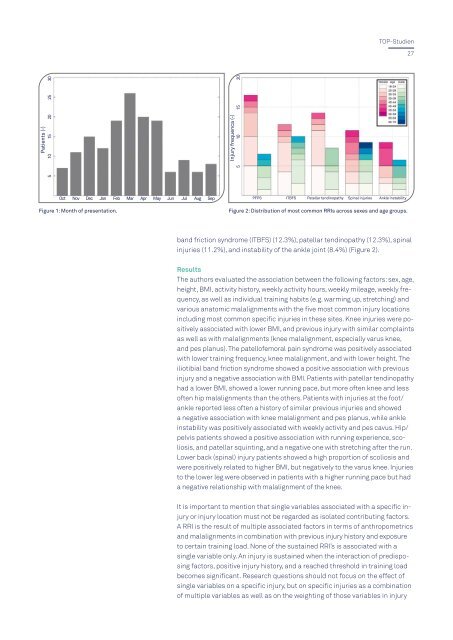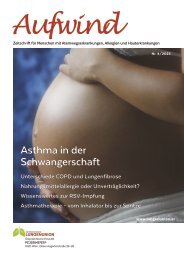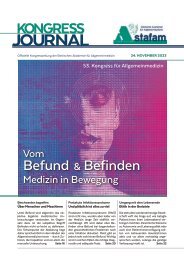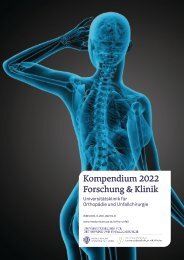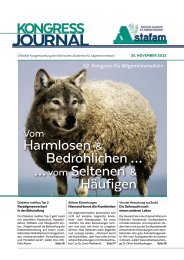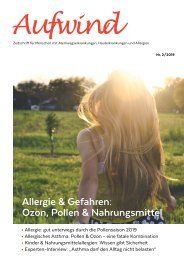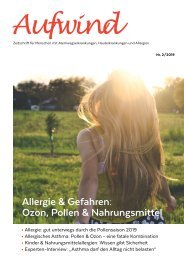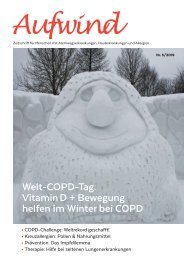Kompendium 2020 Forschung & Klinik
Das Kompendium 2020 der Universitätsklinik für Orthopädie und Unfallchirurgie von MedUni Wien und AKH Wien (o. Univ.-Prof. R. Windhager) stellt einen umfassenden Überblick über die medizinsichen Leistungen und auch die umfangreichen Forschungsfelder dar. Die Veröffentlichungen zeigen die klinische Relevanz und innovative Ansätze der einzelnen Forschungsrichtungen. Herausgeber: Universitätsklinik für Orthopädie und Unfallchirurgie MedUni Wien und AKH Wien Prof. Dr. R. Windhager ISBN 978-3-200-07715-7
Das Kompendium 2020 der Universitätsklinik für Orthopädie und Unfallchirurgie von MedUni Wien und AKH Wien (o. Univ.-Prof. R. Windhager) stellt einen umfassenden Überblick über die medizinsichen Leistungen und auch die umfangreichen Forschungsfelder dar. Die Veröffentlichungen zeigen die klinische Relevanz und innovative Ansätze der einzelnen Forschungsrichtungen.
Herausgeber: Universitätsklinik für Orthopädie und Unfallchirurgie
MedUni Wien und AKH Wien
Prof. Dr. R. Windhager
ISBN 978-3-200-07715-7
Create successful ePaper yourself
Turn your PDF publications into a flip-book with our unique Google optimized e-Paper software.
TOP-Studien<br />
27<br />
5<br />
5<br />
Patients (-)<br />
10 15 20 25 30<br />
Injury frequenca (-)<br />
10 15 20<br />
Oct Nov Dec Jan Feb Mar Apr May Jun Jul Aug Sep<br />
PFPS<br />
ITBFS Patellar tendinopathy Spinal injuries Ankle instability<br />
Figure 1: Month of presentation.<br />
Figure 2: Distribution of most common RRIs across sexes and age groups.<br />
band friction syndrome (ITBFS) (12.3%), patellar tendinopathy (12.3%), spinal<br />
injuries (11.2%), and instability of the ankle joint (8.4%) (Figure 2).<br />
Results<br />
The authors evaluated the association between the following factors: sex, age,<br />
height, BMI, activity history, weekly activity hours, weekly mileage, weekly frequency,<br />
as well as individual training habits (e.g. warming up, stretching) and<br />
various anatomic malalignments with the five most common injury locations<br />
including most common specific injuries in these sites. Knee injuries were positively<br />
associated with lower BMI, and previous injury with similar complaints<br />
as well as with malalignments (knee malalignment, especially varus knee,<br />
and pes planus). The patellofemoral pain syndrome was positively associated<br />
with lower training frequency, knee malalignment, and with lower height. The<br />
iliotibial band friction syndrome showed a positive association with previous<br />
injury and a negative association with BMI. Patients with patellar tendinopathy<br />
had a lower BMI, showed a lower running pace, but more often knee and less<br />
often hip malalignments than the others. Patients with injuries at the foot/<br />
ankle reported less often a history of similar previous injuries and showed<br />
a negative association with knee malalignment and pes planus, while ankle<br />
instability was positively associated with weekly activity and pes cavus. Hip/<br />
pelvis patients showed a positive association with running experience, scoliosis,<br />
and patellar squinting, and a negative one with stretching after the run.<br />
Lower back (spinal) injury patients showed a high proportion of scoliosis and<br />
were positively related to higher BMI, but negatively to the varus knee. Injuries<br />
to the lower leg were observed in patients with a higher running pace but had<br />
a negative relationship with malalignment of the knee.<br />
It is important to mention that single variables associated with a specific injury<br />
or injury location must not be regarded as isolated contributing factors.<br />
A RRI is the result of multiple associated factors in terms of anthropometrics<br />
and malalignments in combination with previous injury history and exposure<br />
to certain training load. None of the sustained RRI’s is associated with a<br />
single variable only. An injury is sustained when the interaction of predisposing<br />
factors, positive injury history, and a reached threshold in training load<br />
becomes significant. Research questions should not focus on the effect of<br />
single variables on a specific injury, but on specific injuries as a combination<br />
of multiple variables as well as on the weighting of those variables in injury


